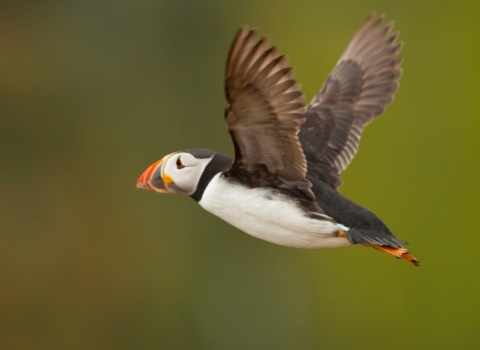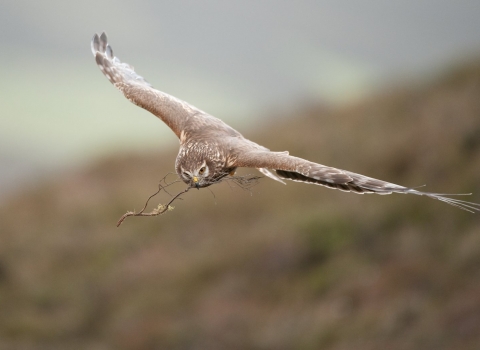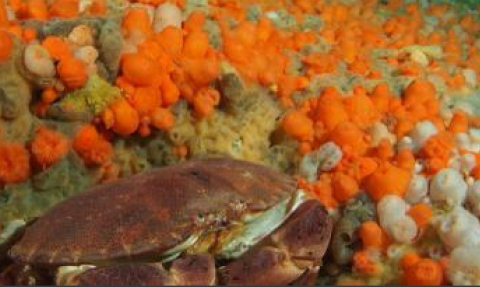
(c) Tim Nicholson
Under the waves
The clean, plankton-rich waters surrounding the Isle of Man contain many underwater marine habitats
Spectacular underwater cliffs, rocky reefs, kelp forests, sea grass, maerl and horse mussel beds support a remarkable diversity of life. This wonderful underwater scenery and rich marine life attracts scuba divers from all over the world.
Some of these habitats are of enormous ecological interest and are priority habitats for conservation. For example, eel grass, maerl and horse mussels are all protected in the Ramsey Bay Marine Nature Reserve as they are important nursery areas for hundreds of other species.
Coastal waters support commercial fisheries for king and queen scallops, lobster and crab. There is also a fishery for whelk as well as an active angling community which catch a wide variety of fin fish.
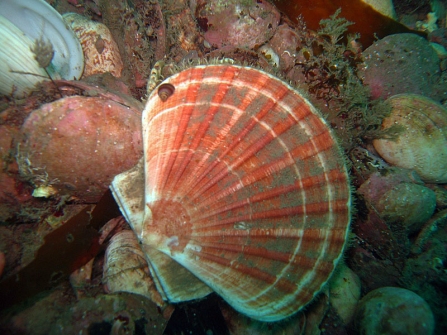
(c) CFR
Between the Tides
The rich sea life of the Isle of Man is most accessible to the general public at low tide on the Island’s rocky shores.
Tidepools high on the shore are difficult places to live. The temperature and saltiness of the water fluctuate widely.
Animals and plants living here have to deal with bird predators at low tide and fish and crab predators at high tide. Only a few tough species such as transparent shrimps and bright green seaweeds thrive here.
Mid shore pools have more complicated ecosystems. Red, green and brown seaweeds provide homes for a rich variety of animal life.
You may find beadlet anemones, shore crabs, hermit crabs, shrimps and cushion starfish. You will certainly see limpet, periwinkle and dogwhelk. Fish such as gobies, blennies, butterfish and scorpion fish also live here.
At the extreme low tide mark you might find lobsters, large edible crabs, sea urchins, starfish and the beautiful dahlia anemone nestling amongst the kelp.

(c) LH
Catching a glimpse
Some of the best tide pools are at Scarlett, near Castletown. Visit MWT's nearby Scarlett Visitor Centre to learn more about the animals in the pools.
Other great rockpooling beaches are at Port Erin, Niarbyl and Port Mooar, although a visit to any of the Island’s rocky shores should reward you with some good finds.
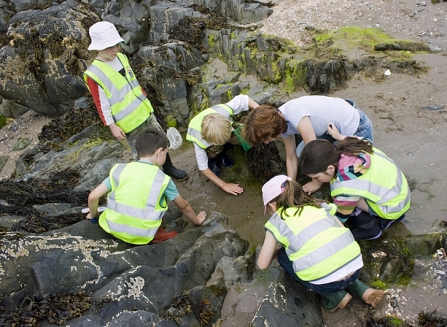
(c) LS
Rockpooling events
We regularly organise rockpooling events, especially in the school holidays. Check our what's on guide.
Tips for Rockpooling safely:
Check the tide times before you set out. Remember, this is a slippery, dangerous place to be so wear good footwear and never go alone. Try not to walk in the tidepools, as this might damage the plants and animals. Be very gentle with anything you touch or pick up and make sure you return everything to where you found it.

